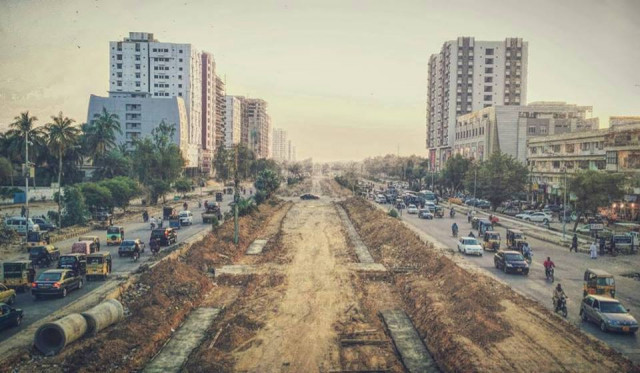
Research shows that despite the massive cost of the BRTS and the immense infrastructure changes that will follow will be of little use to Karachi’s citizens who direly need a mass transit system on the city’s perpetually choked roads.
Research conducted by the Japan International Cooperation Agency (JICA) and renowned urban planners suggest that the Green, Yellow, Red, Blue, Orange Line BRTS projects and the revival of the Karachi Circular Railway (KCR) will only account for merely 6% of the total public transportation requirements.
In all likelihood, Karachi will be unable to have an effective mass transit system by 2030.
The wheels of Karachi’s buses grind to a halt
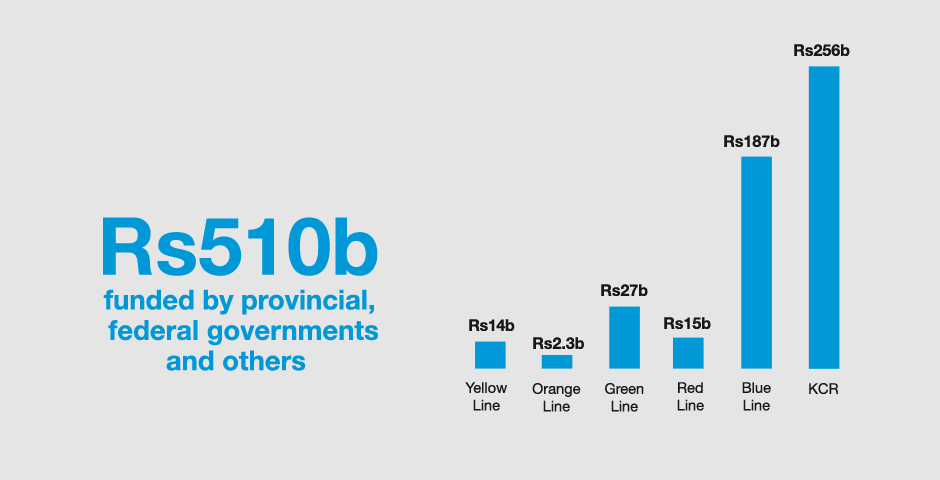 Illustration by Saadat Ali.
Illustration by Saadat Ali.The projects worth Rs510 billion will be funded by the provincial and federal governments. The Yellow Line will cost Rs14 billion, Orange Line Rs2.3 billion, Green Line Rs27 billion, Red Line Rs15 billion, Blue Line Rs187 billion and KCR Rs265 billion. Many experts believe that the huge infrastructure, including flyovers, underpasses and separate lanes exclusively for the BRTS buses, will create more problems instead of making citizens’ lives easier.
The data in the JICA research shows how the much-hyped BRTS will work out after its completion.
On average, 1.51 trips will be taken by commuters in Karachi every day, which if multiplied by the total population (an estimated 27.9 million by 2030) will calculate the number of trips that should be taken care of by an efficient mass transit system, which Karachi’s BRTS is being touted as, against all odds.
This will mean that on a normal weekday some 42,129,000 trips will be generated in Karachi, which can be catered to by public and private transport. However, the planning reports show that the five lines along with the KCR will cater to only 1,685,000 people per day.
A stark difference appears when the formula is applied, as the BRTS lines will account for only 6.03% of the total need of commuters in the city.
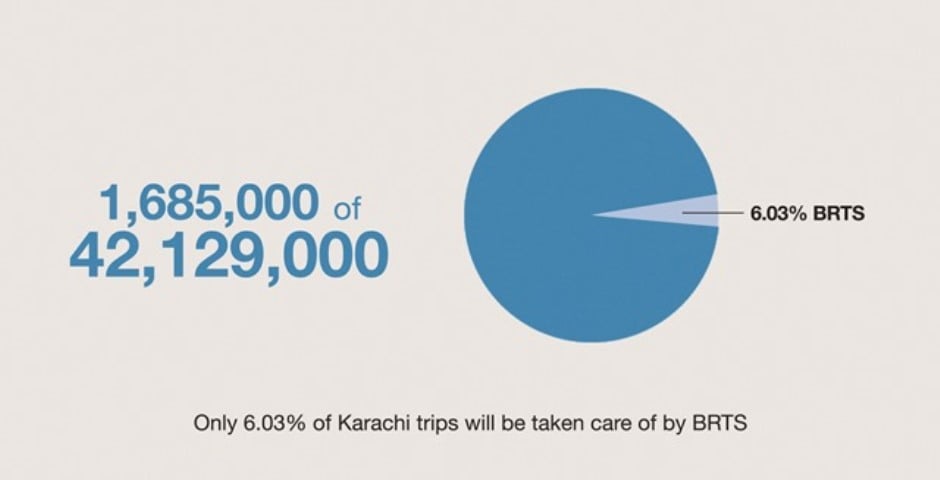
Green Line BRTS faces delay due to design change
This is also in contrast to many developed cities whose planning the Sindh government could have tried to replicate. For instance, in London, 53% of the total journeys of citizens are taken care of by the London mass transit system. Similarly, with the help of Tokyo’s efficient transportation system, 57% of all travel in the mega city takes place through public transport. Karachi’s BRTS – which are being planned for 2030 – are not even close to the mentioned percentage of efficiency of developed cities today.
Even compared to a less developed city, Karachi’s BRTS presents a depressing picture. In Colombia’s Bogotá, 32% of passengers’ needs are taken care of at present by their mass transit system called Transmilenio. Karachi’s heavily funded BRTS lags behinds Colombia’s initiative because of its only 6% efficacy.
Urban planners fear BRTS will fail
Renowned architect, planner and researcher Arif Hasan says that the massively expensive BRTS has not been planned keeping in mind the existing public transport system in the metropolis.
“What we think is that for the time being a lesser amount could have been [allocated] for the existing public transport system managed by the private sector which could have given the masses a bit of relief,” Hasan told The Express Tribune.
The existing system caters to around 42% passengers in the city, according to Karachi Infrastructure Development Company Limited (KIDCL) data.
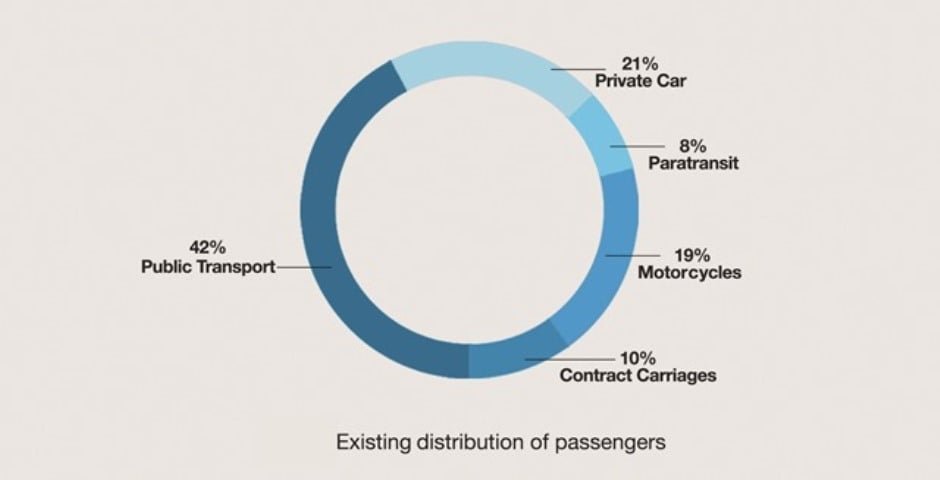
Similarly, Urban Resource Centre Director Muhammad Younus thinks the BRTS planning has ignored the coordination between different modes of transportation. “This project has ignored that there should be coordination between different modes of transportation rather than competition,” he noted.
“For instance, a lot of people take six-seater rickshaws to reach a stop where they can get another bus to reach their workplace. The BRTS has completely ignored that and reaching [the BRTS] bus stops will be a problem for many in the future.”
The director, who is an expert in urban planning, also pointed out that BRTS project will also face a lack of connection between the five lines since each of them is managed or financed by different organisations.
The Green Line is being executed by the federal government, Blue Line by a private developer, the Red Line is still being discussed with the Asian Development Bank, Orange Line is being by the Sindh government and Yellow Line will be taken up with the help of public-private partnership, as per the current plans.
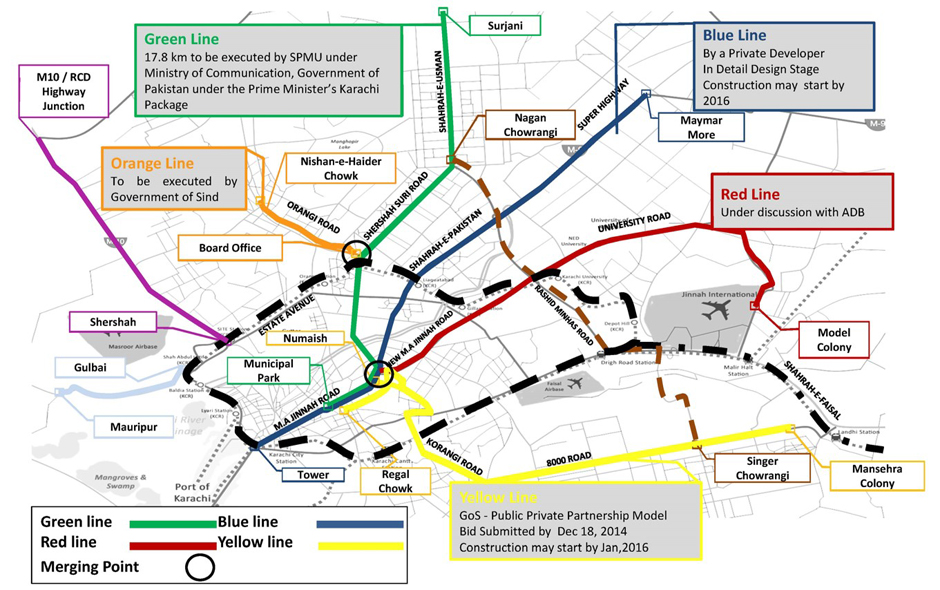
Government had to begin somewhere
When informed about the data on the inefficiency of the BRTS project, Sindh Transport Secretary Tuaha Ahmed Farooqui said the authorities had to do something about the chronic problem.
“Does it mean that we should not start anything at all?” he asked. Farooqui said that the research was carried out by reputable institute – JICA - and the government relied on them. “Expert[s] talking against the BRTS project were also in the committee of the KIDCL and could have prevented the plan from going ahead.”
As the population keeps booming in Karachi, traffic and transportation woes will further aggravate, ostensibly because of the government’s failure to come up with an effective mass transit solution.
(This story is part of the ‘Karachi Needs’ series and will be continued with addressing another problem of the city in the next article)

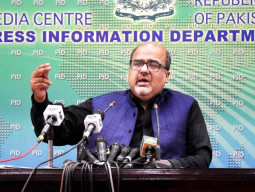
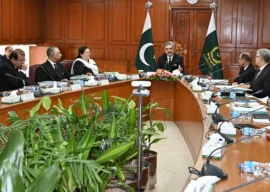














COMMENTS
Comments are moderated and generally will be posted if they are on-topic and not abusive.
For more information, please see our Comments FAQ